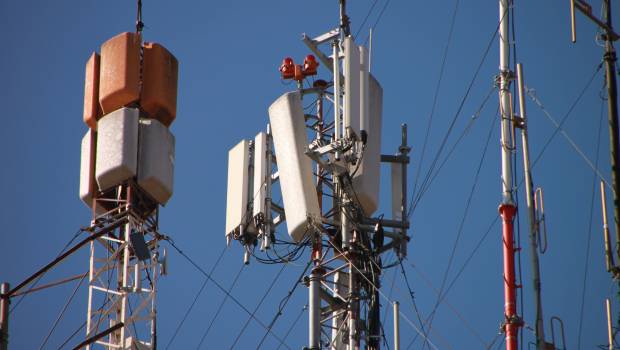Arcep publishes the results of the 2021 Measurement Campaign and notes a clear increase in the quality of the mobile Internet, after a year in 2020 marked by the health crisis
This is the 22nd edition of the annual Quality of Service Assessment Survey for Urban Mobile Operators conducted by Arcep, which will examine mobile service quality measured in 2G, 3G, 4G and for the first time in 5G.
Measurements are everywhere
And Arcep will have no impact since more than a million measurements were taken across all departments, from May to September 2021, on places of life – indoors and outdoors – and on transportation. The survey focused on the most popular mobile services: web browsing, video playback, data transfer, SMS and voice calls. The tests carried out are aimed at evaluating the performance of operator networks in an accurately comparable manner and under different conditions of use.
The disparities are still
There are significant differences in quality depending on location and operators: Arcep invites everyone to compare them using the “My mobile network” tool, depending on the region (dense, medium or rural) in which they live, and depending on the modes of transport you use.
On the mobile internet side, Arcep notes a clear increase in quality of service in 2021 for all uses, after a year in 2020 marked by the health crisis. The quality of mobile Internet services (“data metrics”) is improving significantly for all operators, in all regions: rural, medium and dense.
All regions combined, Orange’s average measured speed is 110 Mbit/s, followed by SFR (69 Mbit/s), Bouygues (55 Mbit/s) and Free Mobile (50 Mbit/s). In rural areas, the free mobile phone offers the second best average speed after Orange.
First for 5G
For the first time, Arcep implemented a QoS testing protocol for a user with a 5G compatible plan and phone. Thus, the upward and downward flows were measured. The published indicator displays the average speed obtained through 5G compatible measurements over the entire area, in order to measure the speeds that a user can expect in their daily use, whether or not they have connected an antenna.
Orange offers the best downlink speeds, averaging 142 Mbit/s across France. Orange 5G users in dense areas, where most of their 5G sites are deployed, have an average of 227 Mbit/s. It is followed by SFR, with an average of 84 Mbit/s across France and only 145 Mbit/s in dense areas, and then Bouygues Telecom (average 71 Mbit/s, 130 Mbit/s in dense areas). The latest free version is at 31 Mbit/s, with little difference between dense areas and medium or rural areas.
Upstream performance is equivalent between 4G and 5G.
Don’t forget the audio and text!
In this regard, the quality of service in 2021 is comparable to that of 2020. Nationally, Orange has the highest rate of 2 minutes of calls and without audio disturbances (86%), followed by Bouygues Telecom, SFR (82%) and Free Mobile (81 %). The trend is similar to the rate of SMS received in less than 10 seconds with 96% for Orange, 94% for Bouygues Telecom and SFR, and 92% for Free Mobile.
And in transportation?
Confirming the 2020 trend, the gaps between operators remain narrow on major roads, with Orange allowing a web page to be displayed in less than 10 seconds in 97% of cases, followed by Bouygues Telecom (95%), SFR (94%) and then Free Mobile (93 %). The trend is the same for calls, with 93% of Orange calls being held for 2 minutes, against 91% for Bouygues Telecom, 88% for SFR and 84% for free mobile.
In the TGVs, Orange is widening the gap in web browsing with nearly 85% of web pages rendered in less than 10 seconds, about 4 points more than last year, ahead of Bouygues Telecom and Free Mobile by 13 points (72%) and SFR (71%). Orange also leads in voice calls (79% of calls are held for 2 minutes), a difference of 13 points over Bouygues Telecom, 15 over SFR and 16 over Free Mobile.
Performance in the metro is similar to 2020, with the notable exception of Lille, where Line 2 was equipped with 4G at the beginning of 2021, thus joining the first line covered since 2018: the rate of webpages displayed in less than 10 seconds and so up 10 seconds from 45 % to more than 97% in the Lille metro.
The quality of service on the “Intercités”, “Transiliens” and “RER” railway hubs can be measured again in 2021, after the impossibility of conducting tests in 2020 due to the health crisis. In Intercités and TER, the quality of voice and data service is comparable to that obtained in the TGV, even if Orange’s leadership is less clear; It’s ahead of Bouygues Telecom, Free Mobile, and then SFR, and their results are very close. At Transiliens, if Orange offers the best web browsing experience (95%, more than 6 points ahead of other operators), it is on par with Bouygues Telecom in terms of the rate of calls kept for two minutes (90%, versus 85% and 84%). for SFR and Free Mobile).

“Devoted gamer. Webaholic. Infuriatingly humble social media trailblazer. Lifelong internet expert.”





